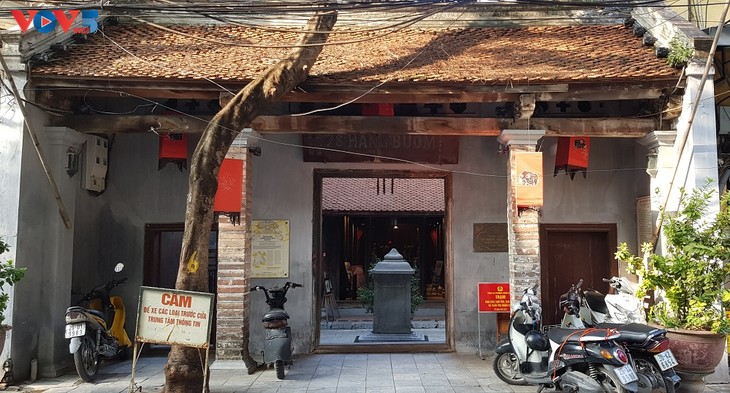(VOVWORLD) - Hanoi’s Old Quarter is a heritage complex with over 100 relics of all kinds, including thousands of ancient houses of great architectural value. Since 2004, the Old Quarter has been recognized as a national relic, calling for more measures to better protect and promote it.
 Bach Ma temple, a national relic site in Hanoi's Old Quarter. Bach Ma temple, a national relic site in Hanoi's Old Quarter. |
The Old Quarter covers an area of around 82 hectares in Hoan Kiem District. It is considered a jewel in the crown of the capital's massive cultural heritage treasure.
The old town features more than 120 historical, cultural, and revolutionary relics, including architectural works of all religions: Buddhist pagodas and temples, churches, and a Muslim mosque. So far, 20 structures in the area have been renovated, such as Bach Ma and Quan De Temples, Kim Ngan Communal House, and Phuc Kien Assembly Hall.
“Hanoi’s Old Quarter has 25 relics recognized as national heritages. Hoan Kiem district has cooperated with the Thang Long-Hanoi Cultural Heritage Association to devise a project on ‘Researching and organizing traditional festivals in the Old Quarter and around Hoan Kiem or Sword Lake’ to revive 14 festivals. Some major events include Yen Thai and Kim Ngan Communal Houses’ Festivals, the Mid-Autumn Festival in the Old Quarter, Hang Luoc Flower street, street cultural activities, and Ca tru (ceremonial singing) performances at relic sites,” said Tran Thi Thuy Lan, Deputy Head of the Old Quarter’s Management Board.
 Quan De Temple in Hanoi's Old Quarter. Quan De Temple in Hanoi's Old Quarter. |
Experts said to better promote intangible values in the Old Quarter, a master plan is in need to create a unique tourism site with more public spaces. Each street should have signs with precise historic information for both the local residents and visitors.
They recommended that more nighttime trading activities and daytime art performances should be organized along the streets of Hang Dao, Hang Ngang, and Dong Xuan to make them more lively places for visitors.
Associate Professor Dr. Do Thi Hao, Deputy Chairwoman of the Vietnam Folk Arts Association, told VOV, “We propose to review and make lists of all existing intangible cultural heritages of the Old Quarter, including epitaphs, the royal certificates to confer titles on people, and legends about Genies. Such documents should be translated and publicized among the local people and visitors. Other important measures to better promote the site include promoting the cultural lifestyle and establishing a museum of traditional fine arts and crafts in the Old Quarter.”
The Old Quarter’s Management Board is working to set up a 3D database for all the important places for better future preservation.
“The Old Quarter is a tourism product of great values. It quite deserves to be listed as a special national relic site. We can connect the site with the Thang Long Imperial Citadel as it used to be part of the citadel, to ask UNESCO to re-recognize the Citadel, this time with the Old Quarter included. Hanoi city and Hoan Kiem district administrations should establish a board which represents the local communities and supports authorities in managing the site,” said Associate Professor Dang Van Bai, Vice Chairman of the Vietnam Cultural Heritage Association.